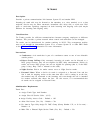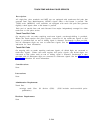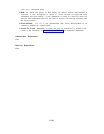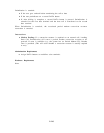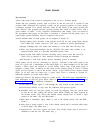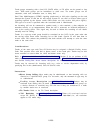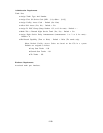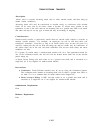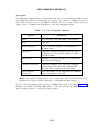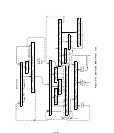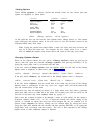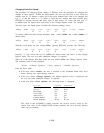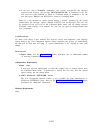Trunk groups connecting with a local CO, WATS office, or FX office can be ground or loop
start.
DID trunk groups can be immediate or wink start. Tie trunks groups can be
automatic, wink start, immediate start, or delay dial.
Dual Tone Multifrequency (DTMF) signaling (touch-tone) or dial pulse signaling can be used
between the System 25 and the far end switch. System 25 can send or receive either type of
signaling required by the distant switch (DID trunks can only receive dial pulse signals).
The type to be used is specified when the associated trunk is administered.
An incoming call can be connected to another trunk, a voice terminal, a data endpoint, an
attendant console, or an announcement. When the call is answered, an off-hook indication is
sent to the serving office.
This signal may be used to initiate the recording of call details
normally used for billing.
Trunks in a two-way trunk group should be translated (at the SAT) in the same order that
the serving office hunts when searching for an idle trunk. System 25 will then hunt in
reverse order. This reduces the probability that both switches will attempt to seize the same
trunk at the same time.
Considerations
Trunks of the same type and Class Of Service may be assigned a (Pooled) Facility Access
Code. This provides users with dial or button access to the trunk pool. Trunks may be dial
access restricted to reserve them for AILS and button access only.
Refer to “Recommended Central Office Trunk Facilities” (Section 5) for an estimate of CO
trunk requirements based on traffic considerations. See the “Pooled Facility-Button Access”
and “Pooled Facility-Dial Access feature descriptions for additional information.
Trunks may be reserved for incoming calls (e.g., sales or service department calls) by
specifying this in the (administered) Class Of Service code.
Interactions
● Direct Group Calling: Most trunks may be administered so that incoming calls are
directed to a specified DGC group. For tie trunks, only the automatic-in type may be
so administered.
Facility Access Restriction (see
“Calling Restrictions”): Stations may be
●
restricted from dialing the CO trunk pool and/or all (fifteen) other trunk groups (as
a whole). Stations so restricted may still dial out if they are transferred to a trunk
by another station not so restricted.
● Tie Trunks: Refer to the Tie Trunk description.
Toll Restriction (see “Calling Restrictions”): When toll restricted stations
●
access FX, WATS, or Tie trunks, they are not toll restricted (i.e., toll restriction
applies to CO trunks only).
2-250



